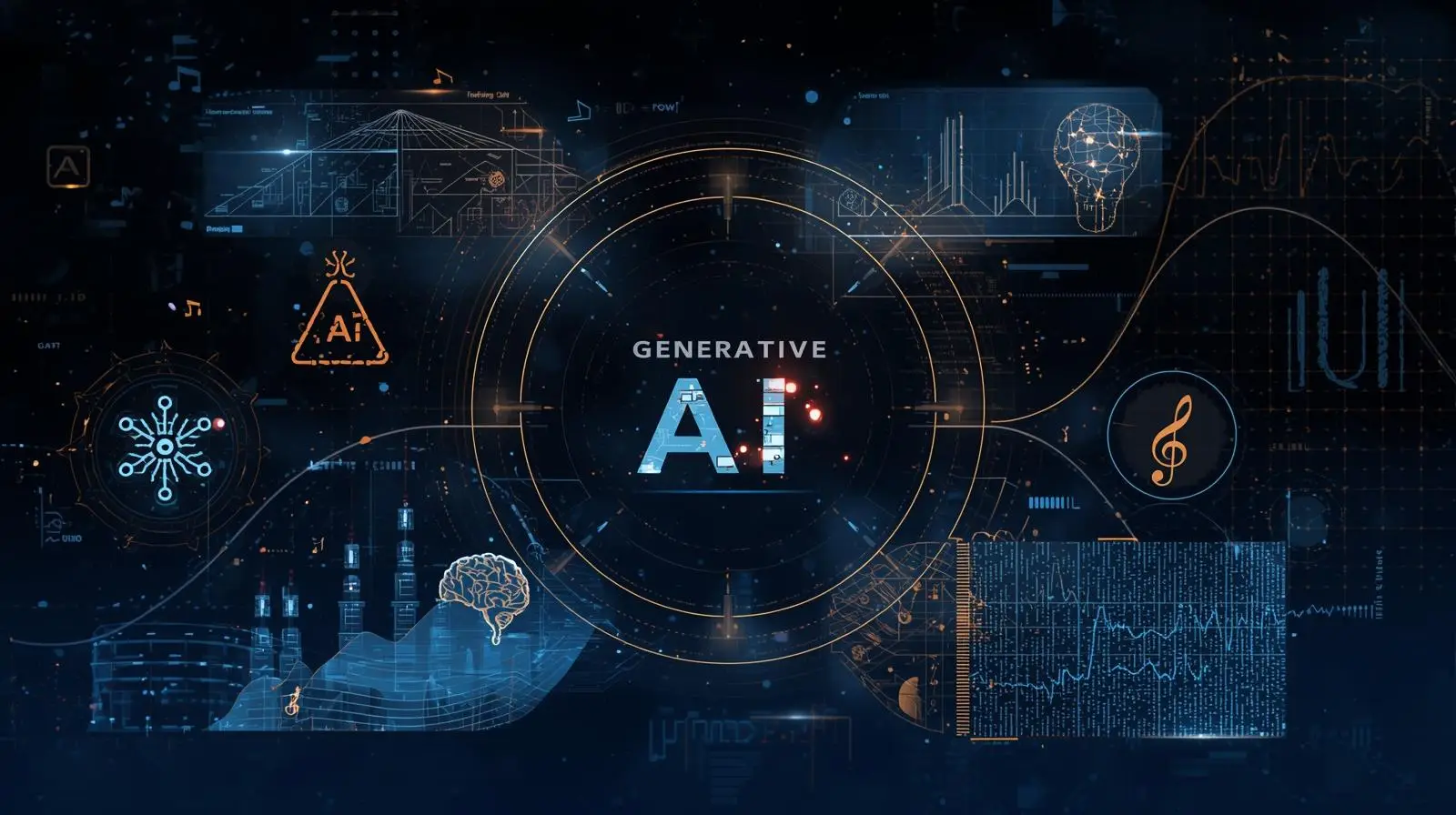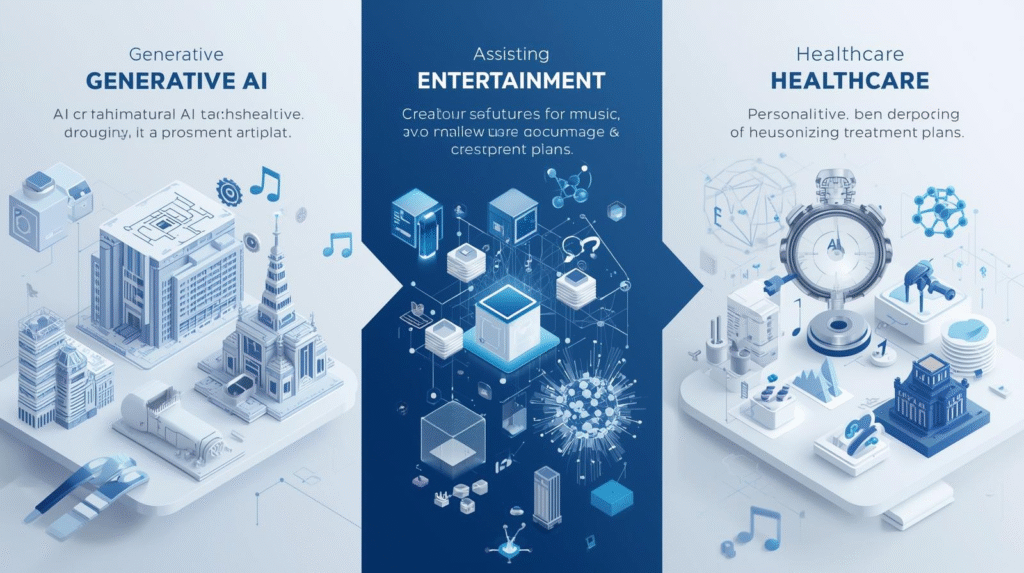
The evolution of technology in the 21st century has been nothing short of extraordinary. Among the many innovations, Generative AI stands out as one of the most transformative. Initially regarded as a supportive tool, its journey from digital assistants to creative architects has reshaped industries, redefined productivity, and raised new ethical questions. Understanding this evolution helps us not only to appreciate how far the technology has come but also to anticipate its future direction.
The Early Stages: Generative AI as Digital Assistants
The origins of Generative AI were modest, beginning as tools that enhanced efficiency rather than created originality. Early chatbots, automated text responders, and basic recommendation systems represented the first wave. These systems performed tasks reliably but lacked true creativity or contextual depth. Their role was to provide assistance, reduce human workloads, and handle repetitive processes.
As machine learning and deep learning technologies advanced, the potential of Generative AI grew exponentially. Models began to recognize language patterns with far greater sophistication. Transformer-based architectures, such as GPT, allowed AI to generate text with nuance, coherence, and relevance. No longer confined to narrow, rule-based operations, these systems started producing results that felt natural and humanlike.
This breakthrough marked a turning point: from simple assistance to the ability to collaborate creatively. Early adopters used AI for content generation, brainstorming, and even language translation, experiencing a glimpse of its broader potential. While these capabilities were impressive, they also hinted at the much larger transformations that would soon unfold.
Expanding Creativity: Generative AI Across Industries

The progression of Generative AI from assistants to architects became most evident as industries integrated it into their workflows. In design, for instance, AI systems helped generate prototypes and draft blueprints that balanced functionality with innovation. Artists and designers could iterate faster, using AI as a collaborator to spark new ideas.
In the entertainment sector, Generative AI demonstrated its ability to co-write scripts, compose music, and design immersive virtual worlds. Filmmakers experimented with AI-generated storylines, while musicians blended algorithmic compositions with human creativity to produce unique soundscapes. Instead of replacing artists, AI became a powerful partner that amplified imagination.
Healthcare offers another compelling case. Generative AI plays a role in drug discovery, analyzing molecular structures and predicting outcomes far more efficiently than traditional methods. Personalized treatment models also benefit from AI’s capacity to process complex data, offering patients solutions tailored to their genetic and health profiles.
The advertising and marketing sectors have perhaps seen the most immediate gains. Marketers employ Generative AI to craft personalized campaigns that resonate with specific audiences. Campaigns can now include multiple variations of ads, messages, and visuals, all generated in real time. This approach not only saves resources but also enhances engagement through personalization.
Education, too, has embraced this evolution. Generative AI creates customized learning experiences by adapting study materials to individual learning styles. Students receive tailored support, while teachers gain scalable tools to enrich their lessons. Instead of replacing educators, AI enhances the classroom environment by expanding resources and accessibility.
Most notably, architecture and engineering showcase the true transformation of Generative AI into an architect of innovation. These systems can now design sustainable buildings, optimize energy use, and predict long-term durability. By analyzing vast datasets, AI proposes solutions beyond the limits of human intuition. The partnership between human designers and AI architects pushes the boundaries of possibility in shaping the built environment.
Challenges, Ethics, and the Future of Generative AI
Despite its promise, Generative AI presents complex challenges. Questions of authorship and ownership remain unresolved. If an AI generates an artwork, who holds the copyright? Does the human who provided the prompt own it, or does it belong to the developers of the AI system? These dilemmas highlight the need for new legal and ethical frameworks.
Bias in training data is another persistent issue. Since Generative AI learns from existing datasets, it risks replicating and even amplifying prejudices embedded in that information. Addressing bias requires proactive strategies, such as curating diverse datasets and implementing fairness-focused algorithms. Without these efforts, the risk of producing harmful or discriminatory outputs remains significant.
Environmental concerns also loom large. Training large-scale Generative AI models requires substantial computational power, consuming vast amounts of energy. The carbon footprint of these processes has sparked debate about sustainability. Researchers are now seeking energy-efficient models and greener approaches to mitigate environmental costs.
Looking ahead, the future of Generative AI is less about replacing human creativity and more about integration. The most powerful outcomes will likely emerge from hybrid collaboration, where humans and AI combine strengths. Humans contribute empathy, cultural understanding, and moral judgment, while AI offers speed, scale, and analytical depth. Together, this synergy creates a new paradigm of innovation.
As society navigates these challenges, regulation and transparency will be key. Clear guidelines can help balance innovation with responsibility. Collaboration among governments, developers, and users will determine how effectively the benefits of Generative AI are maximized while minimizing risks.
Conclusion
The evolution of Generative AI from assistants to architects represents one of the most remarkable shifts in technological history. What began as supportive tools for efficiency has transformed into systems that shape industries, drive creativity, and challenge conventional boundaries.
By examining its journey, we see both the opportunities and challenges it presents. Its potential to redefine healthcare, education, marketing, architecture, and beyond is undeniable. Yet, ethical dilemmas, environmental concerns, and questions of bias remind us that progress must be pursued with responsibility.
Ultimately, the story of Generative AI is not about technology surpassing humanity but about forging partnerships that elevate both. In this collaboration, the true promise of innovation lies. The architects of tomorrow may not be machines alone but the combined efforts of humans and AI working side by side.


